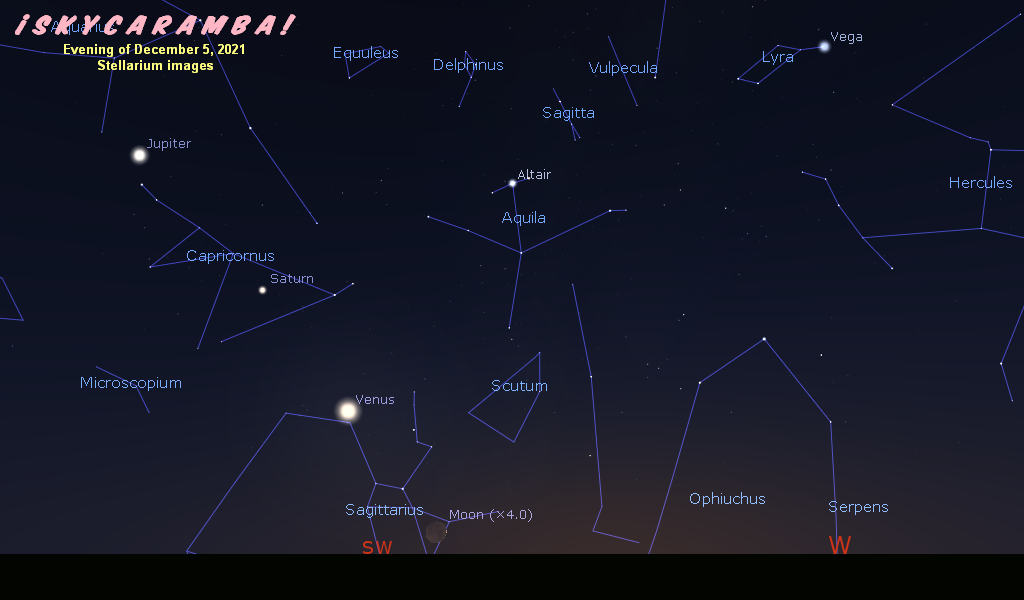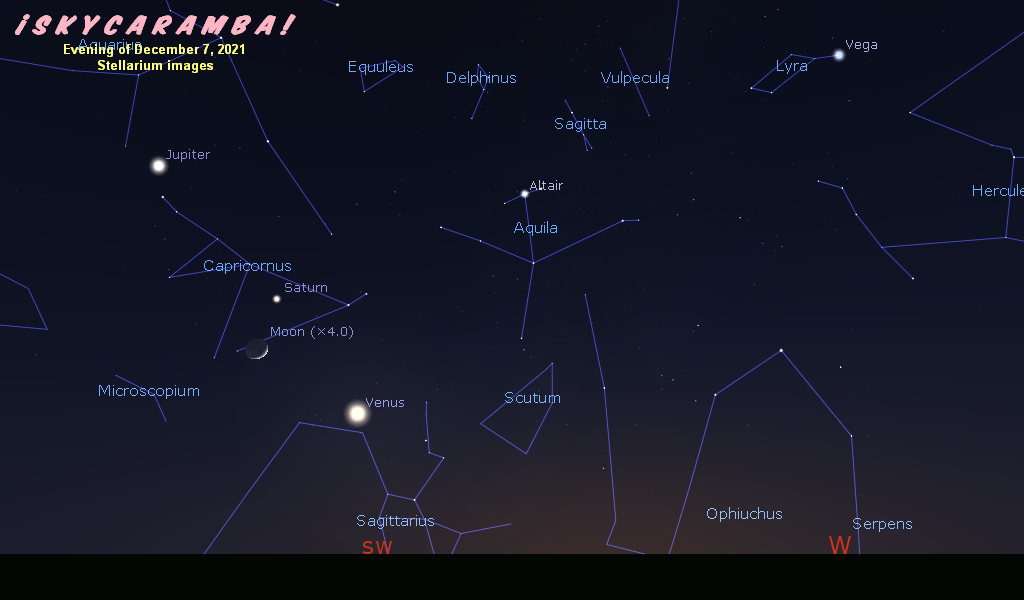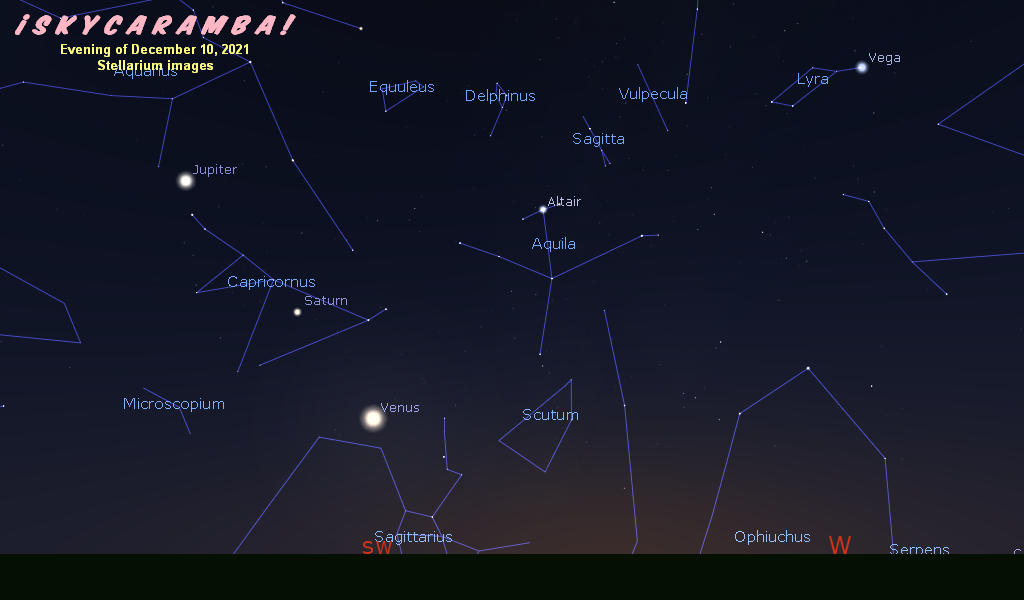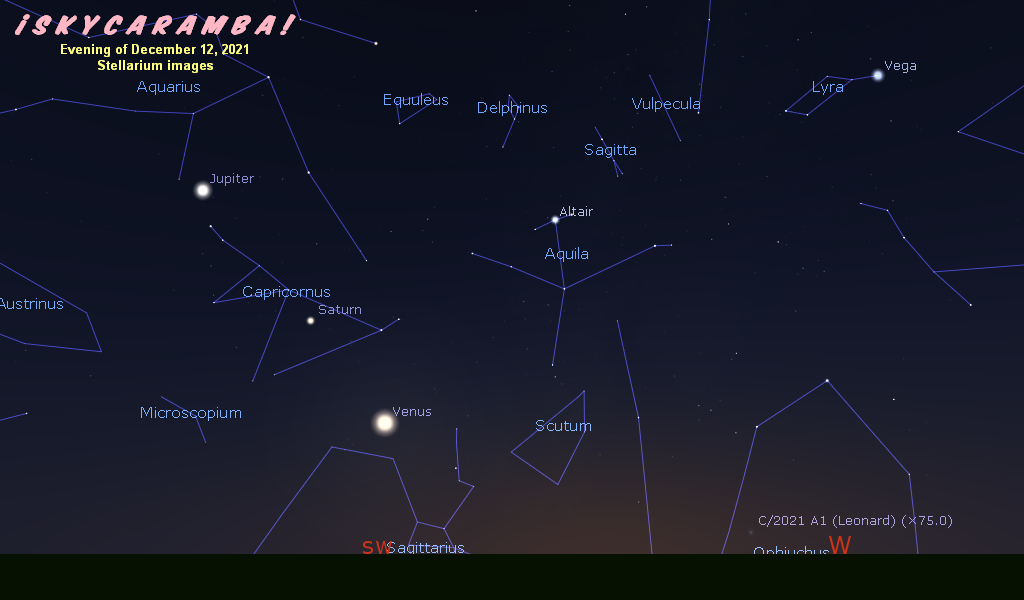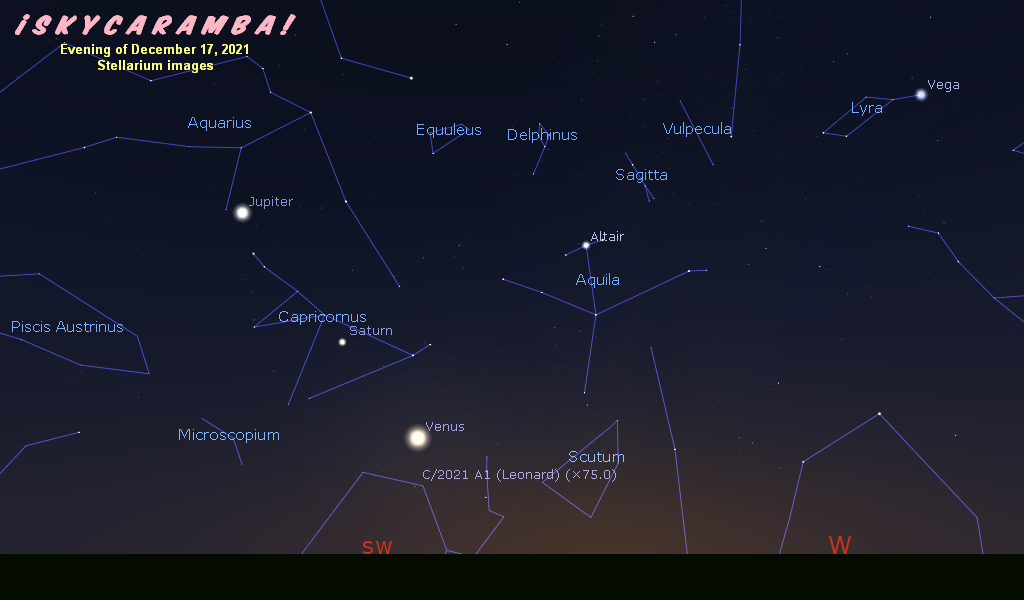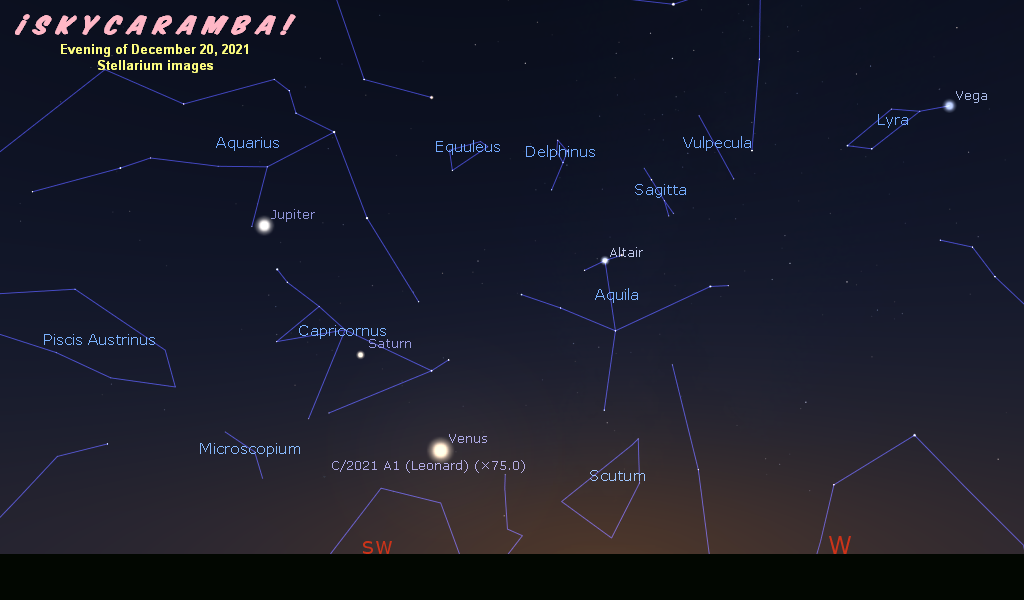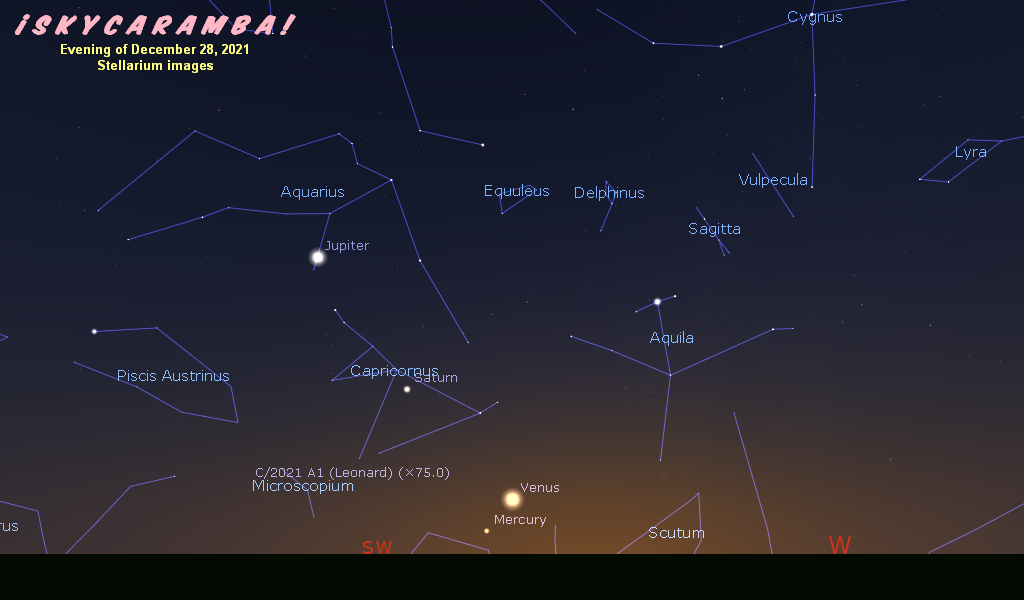All the naked eye planet watching this month is not long after sunset and not long before sunrise. The evening planet watching last longer, because some of the planets are higher than others at sunset and set later. And depending on how visible it is, you may catch Comet Leonard at either time.
(The moving gifs for the evening sky watching aren’t showing up properly here. The workaround is putting every frame farther below. Scroll down to see them.)
Venus starts the month looking ready to leave Sagittarius for Capricornus where Saturn remains. Jupiter is farther up the evening sky from them, leaving Capricornus for Aquarius. By the 10th, it’s clear that Venus is turning around. It’s nearly stationary for the rest of the month as that region of the sky slips sunward into the twilight.
Saturn’s slow movement eastward in Capricornus is steady. You may not see it from night to night. But you shouldn’t have trouble knowing that it has moved from week to week. Of course, Jupiter moves faster. You’ll have little trouble seeing its movement night to night, even as it’s between the standout stars of the constellations it’s moving among.
Mercury joins the party late in the month, passing Venus on the 29th and 30th.
The thin crescent moon will be close to Venus on the 6th, Saturn on the 7th, and Jupiter on the 8th.
After that, Comet Leonard joins the evening meeting. It starts somewhat far right of the planets around the 10th setting so soon after the sun that it will be hard to spot. A clear horizon is a must. It moves southward (left) quickly, passing Venus on the 17th and 18th. It stays a bit below Capricornus and goes into the dim stars of Microscopium around the 22nd.
Just how easy it will be to see is not possible to say as I write this in advance. A comet’s brightness depends on things not understood well enough to be reliably predictable. Leonard is getting closer to the earth until the 12th and then closer to the sun until January 3rd. The circumstances, along with the fact that the comet has never been this way before, should make it brighten up a lot. Will it be a naked eye object? No one should bet on it, but Leonard is among the most likely prospects for such a display.
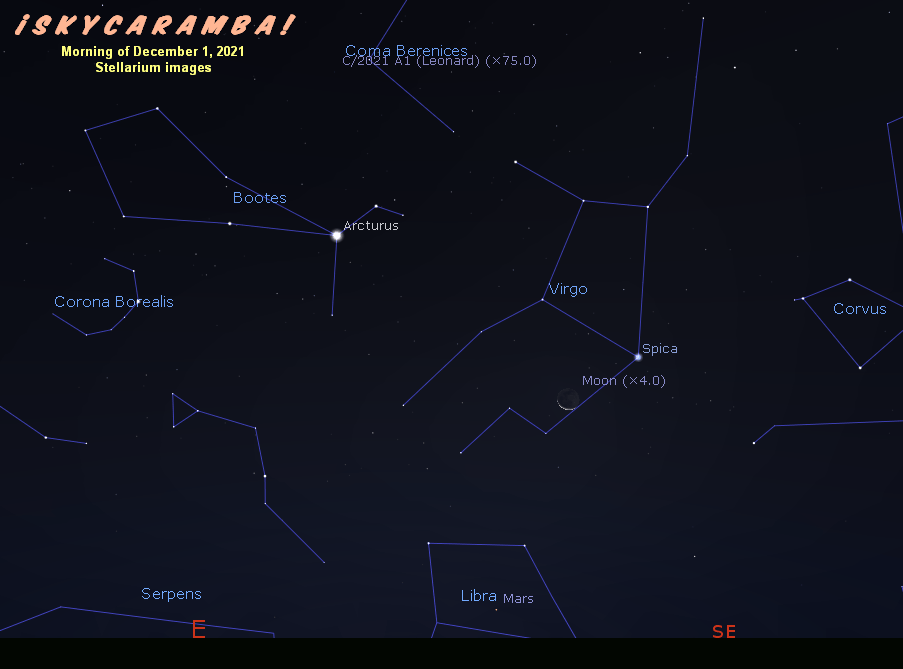
If you’re a morning sky watcher, you may see Leonard then early in December. It’ll be in the east dropping each day toward the sun. It will pass by Arcturus on the 6th. It’ll be a ways north (left) of Mars on the 11th and 12th. Its position makes it possible to spot Leonard at each end of the night for just a few days around that time.
If you have trouble finding very low Mars in the morning, look for it near the waning crescent moon on the 3rd.
Antarctica gets a total solar eclipse on December 4th. Partial phases will be visible from areas around the continent, in far southern Africa, and far southeastern Australia.
The Geminid meteor shower peaks around the 13th and 14th. The best viewing is likely to be several nights before. With the moon waxing toward full on the 15th, this colorful shower may not be able to put on a great show at its height.
The southern solstice is on the 21st.
Moon phases this month: new on the 4th, first quarter on the 11th, full on the 19th, and last quarter on the 27th.
The moon’s at southern lunistice at 26.3° on the 6th. It goes north of the equator on the 12th. Northern lunistice is on the 20th at 26.3°. The moon goes south again on the 27th.
Perigee is on the 4th at 356,800km. Apogee is on the 18th at 406,300km.
Mercury is at aphelion on the 2nd at 0.467 astronomical units from the sun. Vesta is at perihelion on the 26th at 2.153au.




